What I mean, this is not the building that we lived in, but, from the time I was a small child, this was the church we, my family, attended. I every sense, it was the community that we lived in, the people who went here were our neighbors, it was built with the time, sweat and blood of the people who were our relatives and friends. This building, along with a half dozen others, housed the oldest friends, neighbors and relatives that I would ever know. Of course, what we see here, is just the coat, that covers the church of my heart and mind. I realize even now, that I am separated from this place, that the real treasure is what was housed inside this building.
And still...some 15 years after I left this place, in the eyes of many, disgraced by my fall from Faith, when I received the call, asking me to come back, and ply my trade, to renew the landscape of the Church, I found the curious familiarity of a place that I grew up. The old eyes, the old faces, so many that I knew; and the building, as old, and familiar, as a coat long forgotten. I walked into the chapel, the very chapel, with the very furnishings, that I see in the wedding pictures of my parents, I wander the hall, towards the tiny classrooms that held us in study of the Bible, the social hall, where so many times we would gather and renew our bonds of community. The building was what it always was. And I was here to change it's front yard.
The Existing Entry
How long had it been, some 50+ years since the landscape was changed, innumerable years, innumerable hands, this was the end result of those 50 years, changing to fit into a new reality. The landscape, known by the neighborhood as 'the eyesore', the church having fell to a dwindling population over the years, as the congregation moved away. People like me. New codes that carved up the once generous entry, The landscape a tossed salad of attempts and failures to modernize. And so, this tiny community, an outpost of the Japanese-American community I grew up in, had faded along the way. So, then, why the new landscape, and how would they pay what surely would be $100,000 of construction costs.
And that is where this community changed, where they began to ask themselves, how do we sustain our life here, or do we move on. And the answer came in how they opened themselves up to the community that surrounds them, not being the old way, the Japanese-American church, but, being a community church, reaching out to anyone who sought a welcoming and open place to seek their time with God. And life came back into the community, and in so doing, this new energy drove them to look at the 'face' they showed to the community and how it might be more welcoming, more modern. And of all people, they called me, and I considered it an honor that they would consider me. Here is what we did.
New Plantings
Removing the old growth completely, changing to a more open and visible planting scheme, which will lighten the old entry, make a cleaner and neater public face, and use a few elements, such as boulders and grasses to allude to the Japanese heritage, while bolder colors reflect a more upbeat view. An aside, many of the people who were supporters of the churches needs in the mid-20th century were rose growers, as was my family, I had to get some roses in there.
New Access
Rerouting the ramp, both to make it closer to the disabled parking, but, also to remove it from splitting the entry in half, this routing also made the ramp much less steep. The old ramp was built using the church exemption, but, nobody used it, indeed, many of the older parishioners found getting into the old building too tiring. It became both unfriendly, and physically imposing. The new orientation, with new planting, has become one of the most used entries to the church now. Benches have also been added, to allow for stopping and sitting, In time, the landscape will provide a softening buffer and seasonal flowers to make the ramp seem more path like.
The New Sign
A new sign, simplified and modernized, to let people know the church is there, but, not so large or obtrusive as to dominate the corner. Designed with form which mimic the old country sings of Japan, the sign is just another way the site has been modernized. Clearly, a few more coats of finish are needed, but, this balances the need for readability and subtlety to the neighborhood. One of the things I take away from this, is that many of the neighbors have taken time to thank the church for paying attention to the landscape.
The New Entry
The new entry, once we removed the ramp, and started to examine what was most needed, it really came to me that the entry needed to be redone. Besides the ramp cutting the old entry in half, the concrete was worn, the planting had overgrown the area and it was dark. As you can see, this porch faces north, and at one time, a maple overwhelmed the space. It was a difficult decision to remove a maple that had been in that location for nearly 50 years, but, time had done too much damage to it, and it was in the wrong place. Worn railing were removed, grade was adjusted, a gravel groundcover, and smaller scale planting, and a new dwarf Japanese Maple, along with a nice bench, open up the light and air, making this space feel more open. My understanding that the new stairs, simpler paving pattern, new ramps and railings have already had an impact on the old place, with many people being quite pleased with the changes.
A church is the sum of far more than the building and it's grounds, the Church I grew up in was all about the old folks, their sons and daughters, so many people who formed the community that defined what we all gathered to be a part of. But, my hope, is that much like the community work I have done with streets and parks, by creating a place, something welcoming, open and aware of the people who would use the space, that my design work will lead to this community continuing to be sustainable into the future.
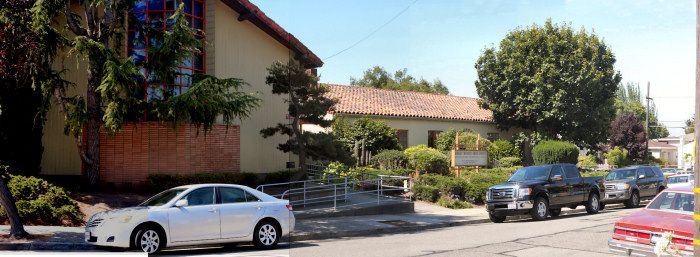
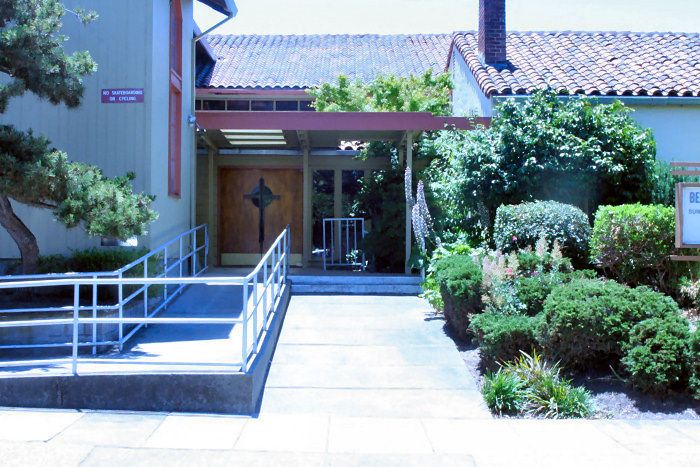
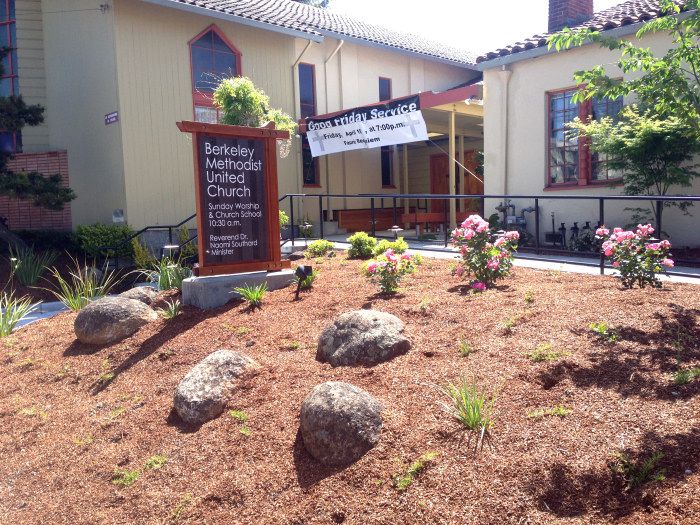
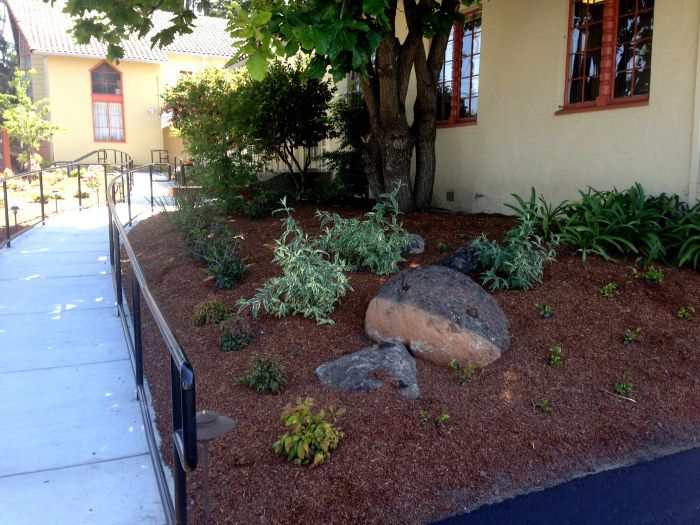
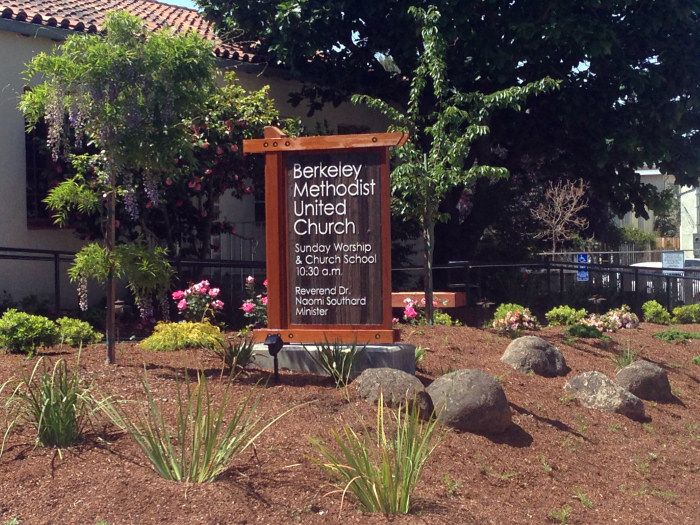
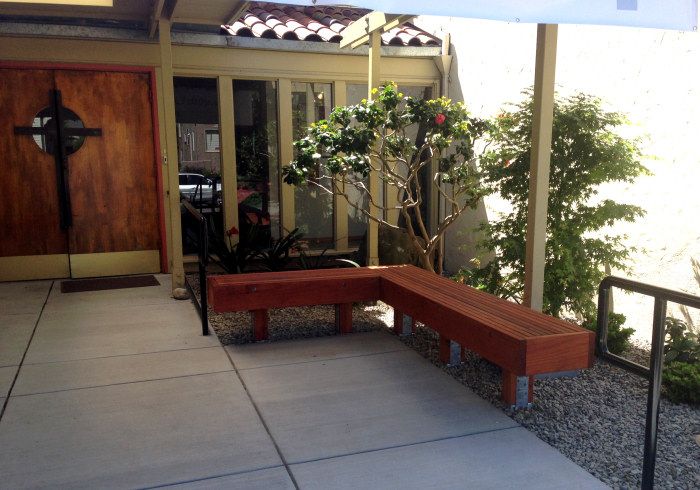
Today at Easter a couple from the neighborhood joined the service for the first time; they told us afterwards that they thought BMUC was a new church in the neighborhood. That's the powerful story that landscaping can tell.
ReplyDelete